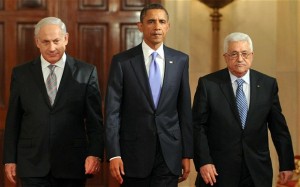~This article originally appeared on The Huffington Post on 05/20/2014~
The predetermined date for a successful, permanent, and lasting peace between Israelis and Palestinians has come and gone without peace being realized. Most of us didn’t even notice.
Here are three reasons why peace negotiations fail:
(1) A predetermined time-frame for peace to be realized is unrealistic.
As the nine-month window for a final status between Israel and Palestine drew to a close, I was reminded of a conversation I had with my Palestinian-Christian friend Daoud Nasser who reflected on peace as a marathon rather than a sprint. He said, “Peace does not happen because powerful men sit around a table, make compromises, and then shake hands. Peace happens as two groups of people who have wounded each other learn to live for the benefit of one another. For us, this will take years.”
(2) Peace negotiations focus on compromise rather than restoration.
Last fall, I sat in a room just off of Capitol Hill with cross-sector leaders who are deeply committed to both Israelis and Palestinians. Into the room walked one of Secretary Kerry’s representatives who outlined the peace process while, wisely, keeping a tight lip on the details of the negotiations. As we listened, though, it became clear that the negotiations were far more about the recognition of each others’ viability and right to exist in the land than they were about how each has caused pain to the other and how they might contribute to each other’s healing.
This exposes the limitations of peace negotiations and the problem of the compromises within: they cause us to memorialize our own pain while ignoring the pain of the other and encourage us to protect our own assets…even develop strategies to gain more.
While necessary and viable steps in the right direction, peace between Israel and Palestine will not result from compromises made to exchange prisoners and freeze settlements. Instead, true, lasting peace will come as these two people seek the restoration of each other and, in so doing, find themselves being restored.
(3) Peace cannot be legislated.
Rightly defined, “peace” is the holistic repair of a severed relationship. This is the kind of peace that the world needs, yet it can neither be waged through war nor through agreed upon compromises. There’s a third way that the late, Dr. Glen Stassen suggests in his life-defining work, Just Peacemaking. Learning from the teachings and example of Jesus, Stassen suggests that lasting peace can only be waged as both sides make the courageous decision to lay down power, privilege, and even our experiences of pain for the sake of another’s flourishing. In order for peace to be realized, whether between Israelis and Palestinians or between warring friends, both parties must begin to see the humanity, dignity, and image of God in themselves and in each other. Peace requires that we see and allow ourselves to be moved by the plight of others as well as our own contribution to their pain. Peace requires us to humbly and compassionately walk toward and sit with others within the conflict, all the while seeking to understand rather than to be understood. Then, having listened longer than feels comfortable, peace requires that we engage the human and the conflict through costly, creative initiatives.
As war and negotiations continue to fail, perhaps it’s time we shift our strategy.
